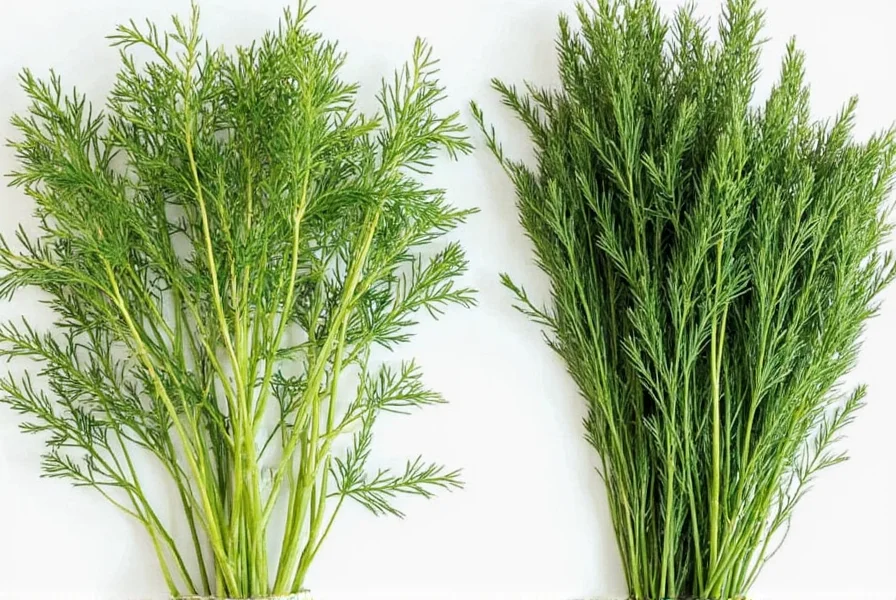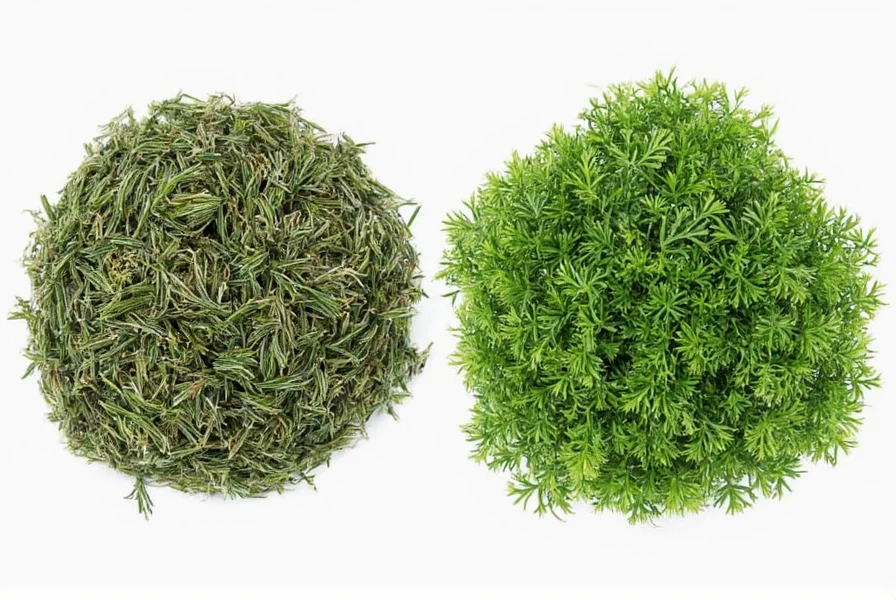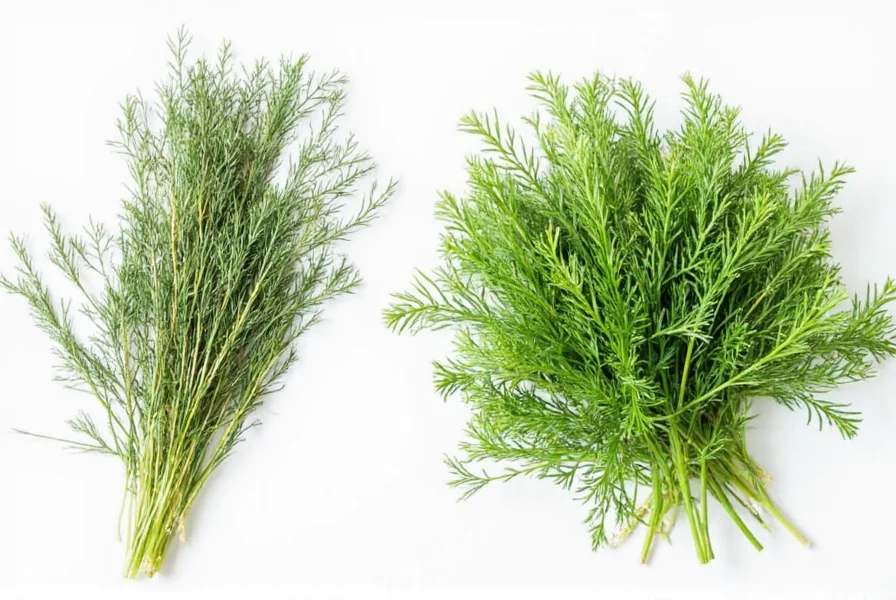Understanding the relationship between dried dill and dill weed is crucial for home cooks and culinary professionals alike. Many grocery store shelves display both terms, creating unnecessary confusion about whether these are distinct products or simply different labeling conventions for the same herb.
What Exactly Is Dill Weed?
Dill weed specifically refers to the delicate, fern-like leaves of the dill plant. Fresh dill weed features a bright green color and a distinctive flavor profile that combines grassy, citrusy, and slightly anise-like notes. When you see “dill weed” on a spice jar, it typically indicates that the product contains the dried leaves of the dill plant rather than the seeds.

Dried Dill: The Preservation Process
Dried dill undergoes a dehydration process that removes moisture from fresh dill weed while concentrating its flavor compounds. Properly dried dill retains much of its characteristic aroma, though the flavor becomes more intense and slightly different from its fresh counterpart. The drying process doesn't transform the herb into something new—it simply preserves the dill weed leaves in a shelf-stable form.
Why the Confusion Between Dried Dill and Dill Weed?
The terminology confusion stems primarily from inconsistent labeling practices across different spice manufacturers. Some companies use “dill weed” to distinguish the leafy portion from dill seeds, while others use “dried dill” as the standard term. This inconsistency has led many home cooks to believe they're purchasing different products when, in reality, they're getting the same herb.
| Characteristic | Dried Dill | Dill Weed |
|---|---|---|
| Source | Dried leaves of dill plant | Dried leaves of dill plant |
| Flavor Profile | Concentrated, slightly stronger | Same as dried dill |
| Appearance | Dark green, crumbled leaves | Dark green, crumbled leaves |
| Common Packaging Labels | “Dried Dill,” “Dill Herb” | “Dill Weed,” “Dried Dill Weed” |
| Substitution Ratio | 1 teaspoon dried = 1 tablespoon fresh | 1 teaspoon dried = 1 tablespoon fresh |
Practical Cooking Applications
When following recipes that call for either dried dill or dill weed, you can use them interchangeably without adjusting quantities. Both terms refer to the same dried herb product. Understanding dried dill versus dill weed helps prevent unnecessary trips to the grocery store when you realize you already have the ingredient under a slightly different label.
Chefs and home cooks should note that dried dill (or dill weed) works best in dishes with longer cooking times, as the heat helps release its essential oils. It's particularly effective in pickling solutions, potato salads, fish dishes, and creamy sauces. For the most vibrant flavor, add dried dill during the last 10-15 minutes of cooking.
Storage Recommendations for Maximum Freshness
Proper storage significantly impacts the shelf life and flavor retention of dried dill. Store your dried dill or dill weed in an airtight container away from direct light and heat sources. When stored correctly, dried dill maintains optimal flavor for 1-2 years. After this period, while still safe to consume, the herb gradually loses its aromatic compounds and becomes less potent.

Substitution Guidance When You Run Out
If your recipe calls for dried dill but you only have fresh dill available, use a 1:3 ratio (1 teaspoon dried dill equals 1 tablespoon fresh dill). Conversely, if you need fresh dill but only have dried, multiply the dried amount by three. While not perfect substitutes, tarragon or fennel fronds can work in a pinch when you need that anise-like flavor profile that dill provides.
Common Misconceptions About Dill Terminology
Many home cooks mistakenly believe that dill weed refers to a different plant variety or a specific part of the dill plant other than the leaves. This misunderstanding often leads to unnecessary confusion when shopping for ingredients. Clarifying dried dill and dill weed terminology helps streamline meal preparation and reduces grocery shopping stress.
Another frequent misconception involves confusing dill weed with dill seed. These are distinctly different products with unique flavor profiles and culinary applications. Dill seed comes from the flower heads of the mature dill plant and has a stronger, more pungent flavor with pronounced caraway notes, making it better suited for pickling and bread baking rather than the delicate applications where dill weed shines.
Maximizing Flavor in Your Dishes
To get the most flavor from your dried dill (or dill weed), consider “blooming” the herb in a small amount of warm oil before adding it to your dish. This technique helps release the essential oils trapped in the dried leaves, creating a more robust flavor infusion. Simply add your measured dried dill to a tablespoon of warm oil and let it sit for 5-10 minutes before incorporating it into your recipe.
Frequently Asked Questions
Can I substitute dried dill for fresh dill in recipes?
Yes, you can substitute dried dill for fresh dill using a 1:3 ratio (1 teaspoon dried dill equals 1 tablespoon fresh dill). Since dried herbs have more concentrated flavor, you'll need less dried dill than fresh. Add dried dill earlier in the cooking process to allow time for rehydration and flavor development.
What's the difference between dill weed and dill seed?
Dill weed refers to the leaves of the dill plant, while dill seed comes from the flower heads of mature dill plants. They have distinctly different flavor profiles—dill weed has a delicate, grassy-citrus flavor, while dill seed has a stronger, more pungent taste with caraway notes. They're not interchangeable in recipes as they serve different culinary purposes.
How long does dried dill last before losing flavor?
Properly stored in an airtight container away from light and heat, dried dill maintains optimal flavor for 1-2 years. After this period, it gradually loses potency but remains safe to consume. To test freshness, rub a small amount between your fingers—if you can't detect a strong aroma, it's time to replace your supply.
Why do some recipes specify “dill weed” instead of “dried dill”?
Recipes may use “dill weed” to specifically indicate the leafy portion of the dill plant rather than dill seeds. This terminology helps prevent confusion, especially in regions where “dill” alone might be ambiguous. In practice, when referring to dried product, both terms mean the same thing—dried dill leaves.
Does dried dill lose nutritional value compared to fresh dill?
The drying process concentrates certain nutrients while reducing others, particularly vitamin C which is sensitive to heat and air exposure. However, dried dill retains significant amounts of calcium, iron, and manganese. Both fresh and dried dill offer antioxidant benefits, with dried dill providing more concentrated minerals per volume due to moisture removal.











 浙公网安备
33010002000092号
浙公网安备
33010002000092号 浙B2-20120091-4
浙B2-20120091-4